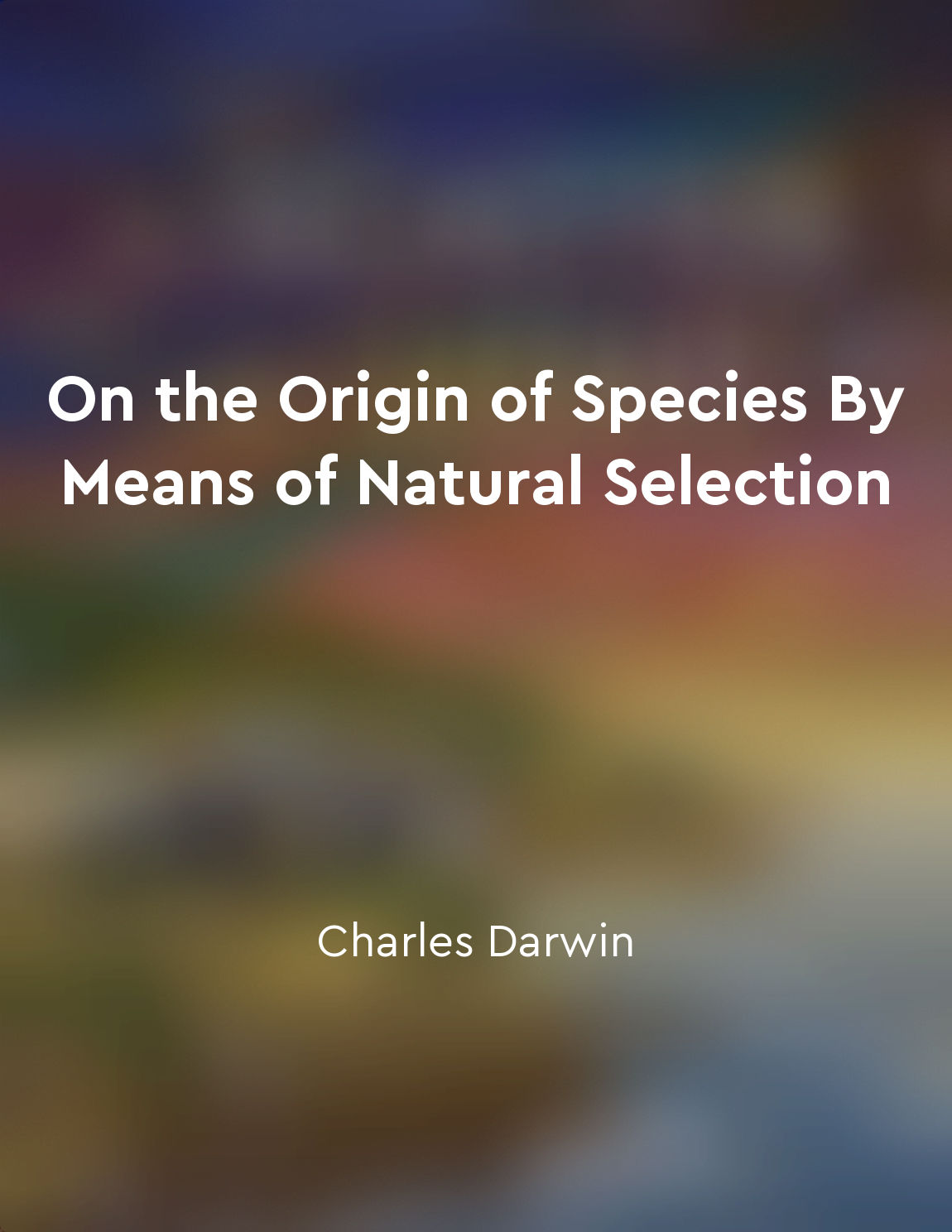Behavioral patterns can be explained by evolutionary principles from "summary" of The Greatest Show on Earth by Richard Dawkins
One of the most fascinating aspects of evolutionary biology is the way in which behavioral patterns in animals can be explained by principles of natural selection. The concept that animals exhibit certain behaviors because those behaviors have been favored by natural selection over time is a powerful one, shedding light on everything from mating rituals to social structures. Take, for example, the behavior of the male peacock. The elaborate and colorful display put on by male peacocks during mating season may seem extravagant and unnecessary to us, but from an evolutionary standpoint, it makes perfect sense. Female peahens are more likely to choose a mate with the most impressive display of feathers because those displays are a sign of genetic fitness. The more colorful and elaborate the feathers, the healthier and more genetically robust the male is likely to be. Similarly, the behavior of honeybees in forming complex hives with a division of labor can be explained by evolutionary principles. Worker bees sacrifice their own reproductive potential to care for the queen and her offspring because it increases the chances of their genes being passed on. By helping the queen to reproduce, worker bees are indirectly passing on their own genes through their shared genetic connection. In the animal kingdom, behaviors that may seem puzzling or irrational to us often have a clear evolutionary explanation. Take the behavior of the cuckoo bird, for instance. Cuckoos are known for laying their eggs in the nests of other bird species, tricking those birds into raising their young. This behavior may seem deceitful, but from an evolutionary standpoint, it is a highly successful strategy. By offloading the responsibility of raising their young onto other bird species, cuckoos are able to maximize their own reproductive success.- The concept that behavioral patterns can be explained by evolutionary principles is a powerful tool for understanding the natural world. By looking at the behaviors of animals through the lens of natural selection, we can gain insight into the reasons behind those behaviors and appreciate the incredible diversity and complexity of life on Earth.
Similar Posts
Selfawareness sets humans apart from other animals
One of the most defining characteristics of human beings is their self-awareness. This ability to reflect on oneself and unders...
Culture also impacts sexual behavior
Culture plays a significant role in shaping our sexual behavior. It influences how we perceive sexuality, express our desires, ...
The importance of emotions in human behavior
Emotions play a crucial role in guiding human behavior. They are deeply rooted in our evolutionary past, influencing our action...
People are driven by both selfinterest and a desire for connection
In our daily lives, we are often torn between our own personal interests and our innate desire for connection with others. This...

The connection between humans and nature
The relationship between humans and nature is a complex and multifaceted one. Throughout history, humans have interacted with t...

Common ancestry of all species
The idea that all living beings have descended from a common ancestor holds immense implications for the study of biology. It i...
Conservation of natural resources is essential for sustainable development
The conservation of natural resources is crucial for sustainable development. Natural resources are finite and must be managed ...
Genes can influence behavior for their benefit
In the endless struggle for survival and reproduction, genes will go to great lengths to ensure their own perpetuation. One way...
Evolutionary psychology offers a new perspective on human nature
Evolutionary psychology provides a fresh lens through which to view human nature. By examining the ways in which our ancestors ...

